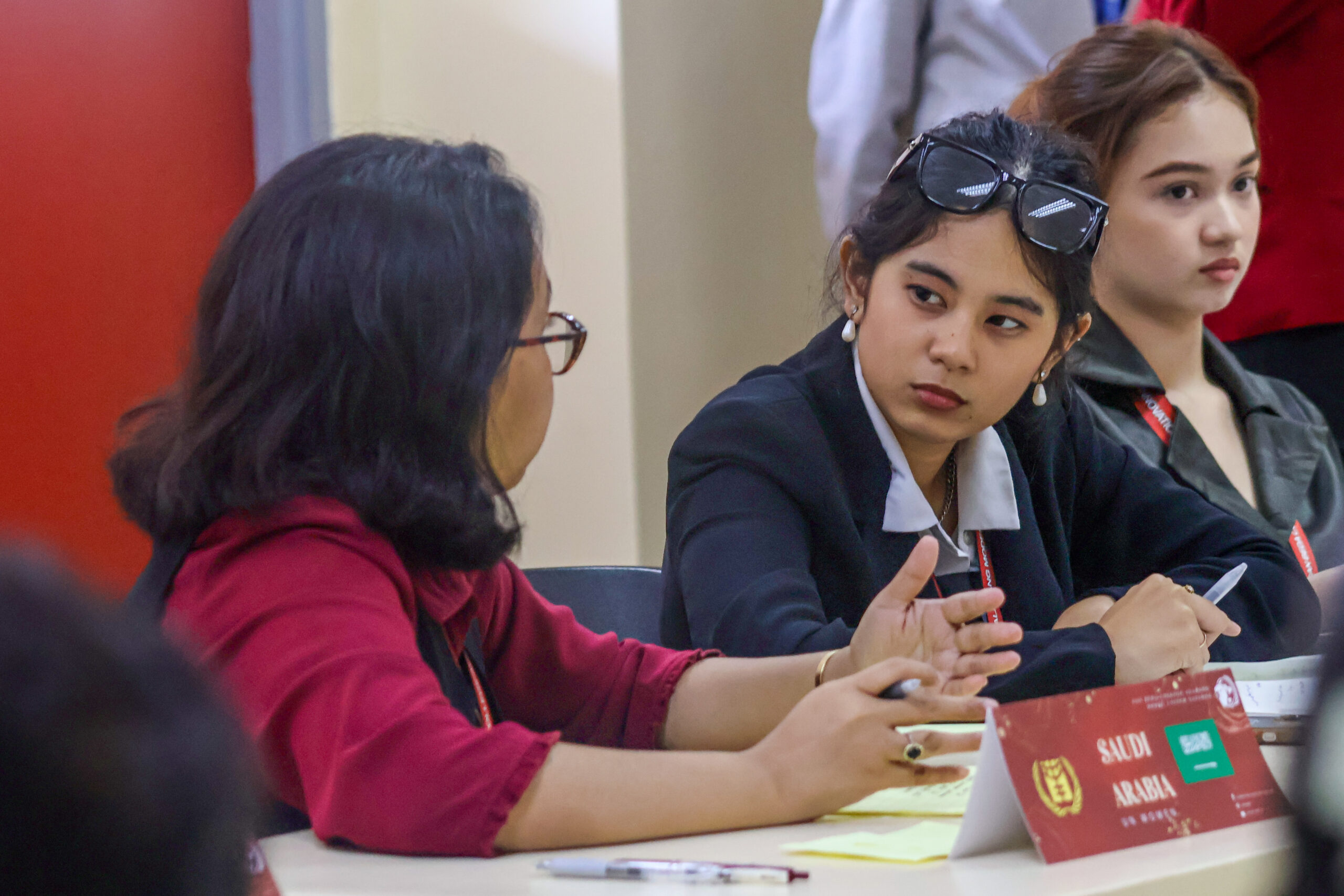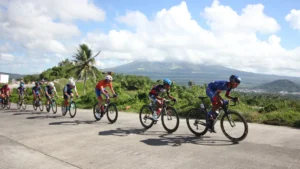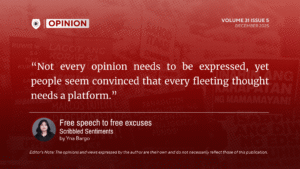Written By Sophia T. Anillo | October 14, 2025

Photographed By Jannica Faith V. Tan
A Crack to Mend, A Nation to Ascend
REVERED for its resilience, bamboo has long stood as a symbol of the ever-so-strong Filipino core. Though even the most resilient bamboo may crack when faced with unrelenting winds, the Philippines currently finds itself enduring a crack in the nation. This stems from the unrelenting winds of the country's continued dependence on overseas labor. While the nation persists in standing tall by relying on its people abroad, this culminates in the cracks ceaselessly enlarging. These said cracks, at the end of the day, may solely be mended by the renowned ‘pag-asa ng bayan,’ the youth.
Through the Model United Nations (MUN), which is an educational simulation of the United Nations, students are necessitated to roleplay as delegates — confronting a changing world, brimming with issues. This educational simulation is present in the College, called the San Beda College Alabang Model United Nations (SBCAMUN), organized annually by the International Studies department. The recent SBCAMUN IV, held from Oct. 6 to 8, reaffirmed MUN’s vital role in addressing a changing world by tackling pressing global issues — one committee notably focusing on pornography. Undoubtedly, with the increasing gap in the Philippines, MUN offers a lending hand to today’s youth to directly play a role in this changing world where the crack grows more abundant.
Cracks That Span Generations
As emphasized during an MUN conference, humanity dwells in a changing world, a place where the crack has the plausibility to widen further. Nevertheless, there are certain aspects of the Philippines that remain unchanged. In a time of Spanish colonization, among the positive aspects was the liberalization of trade, which permitted the emergence of the Ilustrados. The Ilustrados, middle class predominantly composed of mestizos, were the individuals possessing the liberty to travel to Europe for education amidst the 1880s. Their exposure to Europe allowed them to enjoy enlightening ideals of liberty, equality, and reason. Influenced by European thought, reformists, chiefly José Rizal, reframed the Philippine reality through a modern lens.
At this modern age, a similar phenomenon occurs as several Filipinos are still fleeing the country. This is where the world proved that it is, in fact, perpetually changing. The same notion of leaving the country remained the same; yet, these fleeing individuals were not escaping political persecution, nor were they leaving for the purpose of education. Instead, they are escaping from poverty and the lack of opportunity to earn a living — in short, to start a new life. This is the enduring concept of Overseas Filipino Workers (OFWs).
The Hollow Within the Bamboo
In today’s wavering world, where a nation’s crack may either snap or fortify any moment, most Filipinos, even the government itself, glorify the concept of OFWs. This is the result of their capability in providing an immense amount of remittances; in 2024, it incurred a total of P34.49 billion. The Philippines’ crack — parallel to bamboo — therefore intensifies. In spite of the OFWs being a great catalyst in the Philippine economy, they are still physically not in the country. This leaves a gaping crack in the nation — the people are nowhere to be found within its own soil. The majority of the working class leaving, thus, leads to the weakening of industries due to a lack of employees. Indeed, when a crack worsens, it is vulnerable to splitting, ultimately opening the possibility of deterioration.
The crack intensifying in the Philippines is evident in the notion of brain drain — the Philippines trains the skills of these individuals solely for them to migrate to another wealthier nation. While OFWs’ remittances accounted for 0.68 percent of the Gross Domestic Product last Aug, 2024, this worsened staff deficits, specifically with hospitals with others ultimately shutting down. Hence, with millions of OFWs, there are more dependent classes — children and seniors — than working classes in the Philippines.
As the “heroes of the economy,” the notion of OFWs is also often romanticized. The absence of parental presence in children’s development years and the lack of expertise in industries facing globalization underscore the need for national resilience. Embodying the concept of ‘pag-asa ng bayan,’ the youth of today ought to open their eyes to this issue — as they are the very ones, hopefully, to fill in what the nation lacks.
Mending the Bamboo Bend
Without a shadow of doubt, the global economy sways parallel to bamboo amidst a storm. There are ceaseless tremors sent across labor markets that expose the delicate nature of overdependence. If the global economy deteriorates, nations reliant on remittances like the Philippines will inevitably suffer. As overseas workers lose their jobs, a vicious chain unfolds — the money they send back declines, leaving families and the nation dependent on it grappling to survive. This leaves the body splintering to hold itself together against the enlarging crack.
Bearing all this in mind, the youth of today are indeed the architects of tomorrow. As the current working class is largely situated in other countries, the responsibility of mending this crack rests in the hands of the future workforce. Through MUN, which entails researching and negotiating, they will be equipped to devise solutions and empowered to foster camaraderie. The youth will, furthermore, have the platform to immerse themselves in pressing global issues, notably the struggles faced by overseas workers.
MUN, by cultivating both knowledge and kinship, offers precisely what is needed to mend the nation’s crack, which is a fracture that can only be healed through competency and community. Rooted in the ever-so-strong Filipino core, as the youth — the ‘pag-asa ng bayan’— embrace these two values, the nation begins to heal in their hands. Upholding the legacy of the Ilustrados and honoring the sacrifices of the OFWs, the youth shall steadfastly rise, fortifying the nation’s resilience where the crack once ran deep.
Volume 31 | Issue 4



